How to
teach Representation
The media
don’t just offer us a window on the world. They
don’t just present reality, they represent it. Media
producers inevitably make choices: they select and combine,
they make events into stories, they create characters, they
invite us to see the world in a particular way. Media offer
us versions of reality. But audiences also compare media
with their own experiences, and make judgments about how
far they can be trusted. Media representations can be real
in some ways and not in others: we may know that something
is fantasy, yet it can still tell us about
reality.
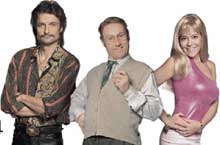
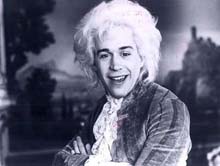
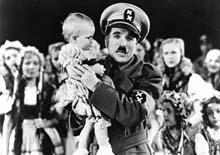
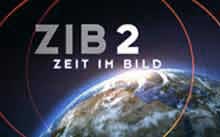

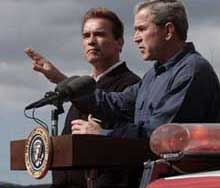
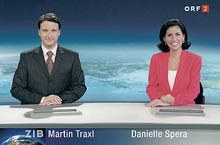
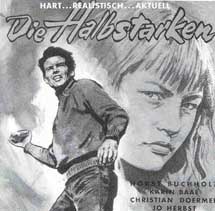
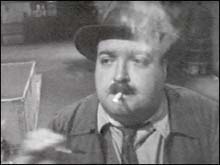
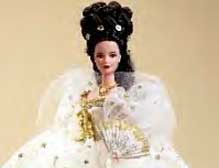
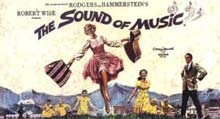
The media
constructs views of the real world for us to read and
interpret. These views having been mediated provide
filtered and partial meanings. However we mostly ignore
this selection and often fail to question the language
and images that are used. Like wallpaper they are just
there; as Athusser suggested ideologies happen behind
our backs. In order for our students to begin to see
behind their backs we need to show them how such
meanings are constructed to appear 'natural'.
The issue of realism therefore is linked to representation. Do we accept the producers' views of reality? Can audiences read in differentiated ways to judge realism? Can discourses around representations change? Representations of others can have a fundamental effect not only on personal behaviour but also on political and global events. Terrorism and immigration continue to be huge issues.
What images do these words raise and more importantly why? This session will address theoretical debates briefly with the main focus on how representation links to knowledge, values, beliefs and thus to power. Changing representations and continuity of types of representation will be explored. The key questions will be applied. Who is in control of representation? Who has produced the representation and why? Who is being represented? What languages have been used? Who is reading the text? And finally what are the meanings and messages conveyed?
Wendy Helsby Film & Media Tutor, Queen Mary’s College, Hants, editor of Understanding Representation (bfi, 2005)
All media messages are ‘constructed.’ We should not think of media texts (newspaper articles, TV shows, comic books to name just a few) as “natural” things. Media texts are built just as surely as buildings and highways are built. The building materials involved vary from one kind of text to another. In a magazine, for example, there are words in different sizes and typefonts, photographs, colors, layout and page location.
TV and movies have hundreds of building blocks - from camera angles and lighting to music and sound effects. What this means is that whether we are watching the nightly news or passing a billboard on the street, the media message we experience was written by someone (or probably several people), pictures were taken and a creative designer put it all together. But this is more than a physical process. What happens is that whatever is “constructed” by just a few people then becomes “normalized” for the rest of us; like the air we breathe, it gets taken for granted and usually goes unquestioned. But as the audience, we don't get to see or hear the words, pictures or arrangements that were rejected. We only see, hear or read what was accepted!
The success of media texts depends upon their apparent naturalness; we turn off a production that looks “fake.” But the truth is, it’s all fake – even the news! That doesn’t mean we can’t still enjoy a movie, watch TV or listen to music. The goal of this question is not to make us cynical but simply to expose the complexities of media’s “constructedness” and thus create the critical distance we need to be able to ask other important questions.
2003 Center for Media Literacy / www.medialit.org Literacy for the 21st Century / Orientation & Overview
Media have embedded values and points of view. Media, because they are constructed, carry a subtext of who and what is important -- at least to the person or persons creating the construction. Media are also storytellers (even commercials tell a quick and simple story) and stories require characters and settings and a plot that has a beginning, a middle and an end. The choice of a character's age, gender or race mixed in with the lifestyles, attitudes and behaviors that are portrayed, the selection of a setting (urban? rural? affluent? poor?), and the actions and re-actions in the plot are just some of the ways that values become “embedded” in a TV show, a movie or an ad.
It is important to learn how to “read” all kinds of media messages in order to discover the points of view that are embedded in them and how to assess them as part of the text rather than merely accepting them as “natural.” Only then can we judge whether to accept or reject a message. Being
able to recognize and name missing perspectives is also a critical skill as we negotiate our way each day through our mediated environment.
2003 Center for Media Literacy / www.medialit.org Literacy for the 21st Century / Orientation & Overview
Read a summary of the Key Questions
and some Examples for Students
The issue of realism therefore is linked to representation. Do we accept the producers' views of reality? Can audiences read in differentiated ways to judge realism? Can discourses around representations change? Representations of others can have a fundamental effect not only on personal behaviour but also on political and global events. Terrorism and immigration continue to be huge issues.
What images do these words raise and more importantly why? This session will address theoretical debates briefly with the main focus on how representation links to knowledge, values, beliefs and thus to power. Changing representations and continuity of types of representation will be explored. The key questions will be applied. Who is in control of representation? Who has produced the representation and why? Who is being represented? What languages have been used? Who is reading the text? And finally what are the meanings and messages conveyed?
Wendy Helsby Film & Media Tutor, Queen Mary’s College, Hants, editor of Understanding Representation (bfi, 2005)
All media messages are ‘constructed.’ We should not think of media texts (newspaper articles, TV shows, comic books to name just a few) as “natural” things. Media texts are built just as surely as buildings and highways are built. The building materials involved vary from one kind of text to another. In a magazine, for example, there are words in different sizes and typefonts, photographs, colors, layout and page location.
TV and movies have hundreds of building blocks - from camera angles and lighting to music and sound effects. What this means is that whether we are watching the nightly news or passing a billboard on the street, the media message we experience was written by someone (or probably several people), pictures were taken and a creative designer put it all together. But this is more than a physical process. What happens is that whatever is “constructed” by just a few people then becomes “normalized” for the rest of us; like the air we breathe, it gets taken for granted and usually goes unquestioned. But as the audience, we don't get to see or hear the words, pictures or arrangements that were rejected. We only see, hear or read what was accepted!
The success of media texts depends upon their apparent naturalness; we turn off a production that looks “fake.” But the truth is, it’s all fake – even the news! That doesn’t mean we can’t still enjoy a movie, watch TV or listen to music. The goal of this question is not to make us cynical but simply to expose the complexities of media’s “constructedness” and thus create the critical distance we need to be able to ask other important questions.
2003 Center for Media Literacy / www.medialit.org Literacy for the 21st Century / Orientation & Overview
Media have embedded values and points of view. Media, because they are constructed, carry a subtext of who and what is important -- at least to the person or persons creating the construction. Media are also storytellers (even commercials tell a quick and simple story) and stories require characters and settings and a plot that has a beginning, a middle and an end. The choice of a character's age, gender or race mixed in with the lifestyles, attitudes and behaviors that are portrayed, the selection of a setting (urban? rural? affluent? poor?), and the actions and re-actions in the plot are just some of the ways that values become “embedded” in a TV show, a movie or an ad.
It is important to learn how to “read” all kinds of media messages in order to discover the points of view that are embedded in them and how to assess them as part of the text rather than merely accepting them as “natural.” Only then can we judge whether to accept or reject a message. Being
able to recognize and name missing perspectives is also a critical skill as we negotiate our way each day through our mediated environment.
2003 Center for Media Literacy / www.medialit.org Literacy for the 21st Century / Orientation & Overview
Read a summary of the Key Questions
and some Examples for Students
For those who are not familiar with Austrian Culture here a short explanation for the choice of images in this section:
1. MA 24/12 - popular Austrian sitcom
2. Mozart in Milos Forman's Amadeus (1984) Mozart being Austrias most famous cultural export
3. Charlie Chaplin in the Great Dictator - Austria was the birth place of Hitler
4. Title sequence of main TV news format
5. Hero's statue on Heldenplatz - famous for Hitlers welcome by the masses in 1939 and more recent important political demonstrations
6. Arnold Schwarzenegger (Austria's second most famous cultural export) and George Bush
7. News anchors at Zeit im Bild
8. Die Halbstarken (1956) with Horst Buchholz - German answer to "The Wild One" ans "Rebel without a cause"
9. Helmut Qualtinger as Herr Karl (1961) - the brilliant satire of the opportunist Herr Karl made Qualtinger famous for decades
10. Empress Elisabeth "Sissy" as Barbie Doll
11. The Sound of Music - famous Rogers/Hammerstein musical - almost unknown in Austria until recently, acknowledged only for the sake of tourism